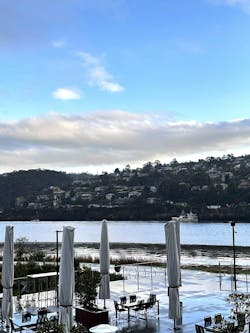Process Safety: The Dangers of Blindly Following Instructions
We had just turned onto Bain Terrace for the fourth time…hopelessly lost.
My sister and I were on a driving holiday. We had arrived in Tasmania that morning on the overnight ferry from Melbourne at 6 a.m. We were a little fatigued, but ready for some adventure. Fortunately, the crossing of Bass Strait was calm, but the early start off the ferry was challenging. The drive from Devonport to Launceston took approximately one and a half hours. We decided to visit Cataract Gorge, a beautiful spot on the South Esk River in Launceston. The biggest tourist attraction in town. I programmed what I thought was the destination into the GPS, and we set off. It turns out there are two sides to the gorge.
In hindsight, the GPS was trying to take us to the northern side when we wanted the southern side. I had visited this place many times before, as had my sister. We remember driving through a neighborhood of houses to get there, but this drive was starting to seem unfamiliar. We kept driving and found ourselves up relatively high in a hilly suburb, where the streets were all one-way, tight and very windy.
We kept climbing.
We turned left, and it seemed every next turn was also left. We were going in circles. So, we found our way back to Bain Terrace and started again, this time turning right, and then every turn was right. We kept passing the same roads and intersections, once again going in circles. The upside was that the scenery was spectacular looking back over the Tamar Valley and Launceston. The houses on the hillside were also beautiful. As my sister said, it was definitely “worth a look,” which became our quote of the drive. Every time we did a slightly difficult drive or walk to a beautiful site, we were rewarded, as it was worth a look.
This little adventure got me thinking about the tension between wanting our people to follow procedures and expecting them to challenge when something is obviously wrong.
Procedures ensure consistent work execution. In safety-critical environments, they form essential safe work systems. In other contexts, they maintain stable operations and quality control. However, engineers and managers are the ones who develop procedures before handing them to workers. This approach produces procedures that are suboptimal at best, or entirely impractical at worst. We must improve procedure development by including the people who actually perform the tasks—they understand what really happens. Additionally, we need to foster a culture that encourages critique. Sometimes circumstances change, and the procedure may not be fit for purpose.
When we challenge procedures, we may discover new and better ways to achieve the same outcome. However, this change must be managed to ensure we are not increasing the risk.
When people knowingly follow an incorrect procedure, we call this “wilful compliance.” They know they should do something different, but are unwilling to challenge it, usually because the culture actively discourages it. This is a dangerous position because the procedures are not perfect, and we can end up with incidents. We should find ways to recognize and thank people who thoughtfully challenge the status quo. These workers are the ones who help us improve safety and production.
The tension here is that we want people to follow procedures, but not blindly. We also want them to challenge when circumstances change and to suggest improvements.
During that drive, my sister and I kept joking about how lost we were and how it felt like we would never get out of the little suburb of Trevallyn. But it was definitely worth a look. Consider how you might be being led astray by blindly following instructions, and remember to challenge. If you are lucky, the diversion might also be worth a look.
About the Author
Trish Kerin, Stay Safe columnist
Director, Lead Like Kerin
Trish Kerin is an award-winning international expert and keynote speaker in process safety. She is the director of Lead Like Kerin Pty Ltd, and uses her unique story-telling skills to advance process safety practices at chemical facilities. Trish leverages her years of engineering and varied leadership experience to help organizations improve their process safety outcomes.
She has represented industry to many government bodies and has sat on the board of the Australian National Offshore Petroleum Safety and Environmental Management Authority. She is a Chartered Engineer, registered Professional Process Safety Engineer, Fellow of IChemE and Engineers Australia. Trish also holds a diploma in OHS, a master of leadership and is a graduate of the Australian Institute of Company Directors. Her recent book "The Platypus Philosophy" helps operators identify weak signals.
Her expertise has been recognized with the John A Brodie Medal (2015), the Trevor Kletz Merit Award (2018), Women in Safety Network’s Inaugural Leader of the Year (2022) and has been named a Superstar of STEM for 2023-2024 by Science and Technology Australia.



